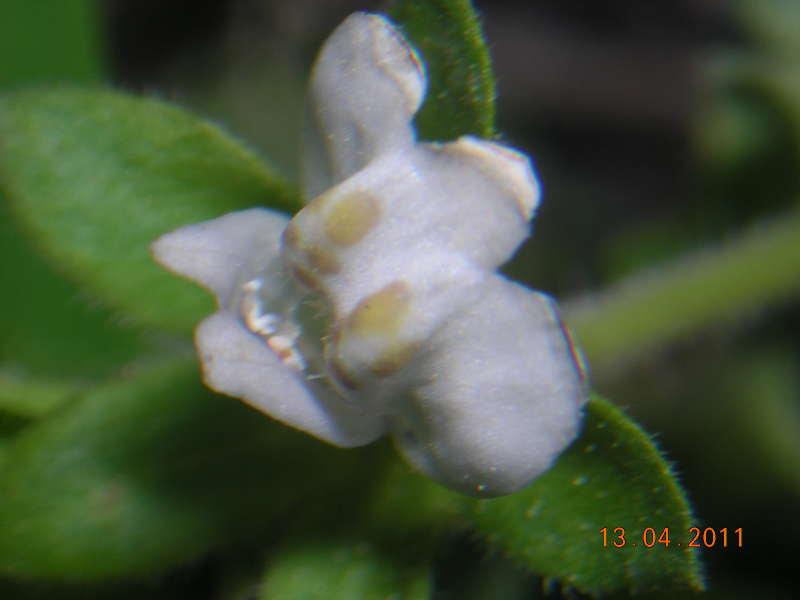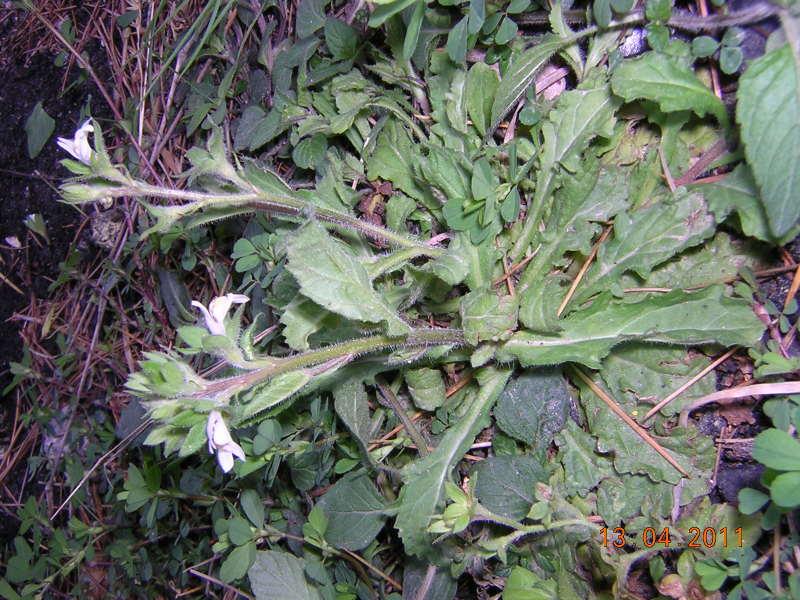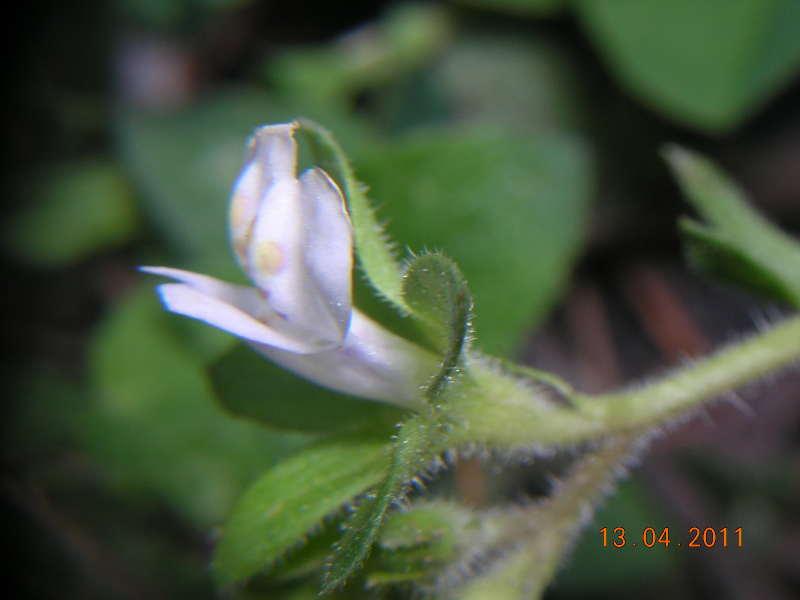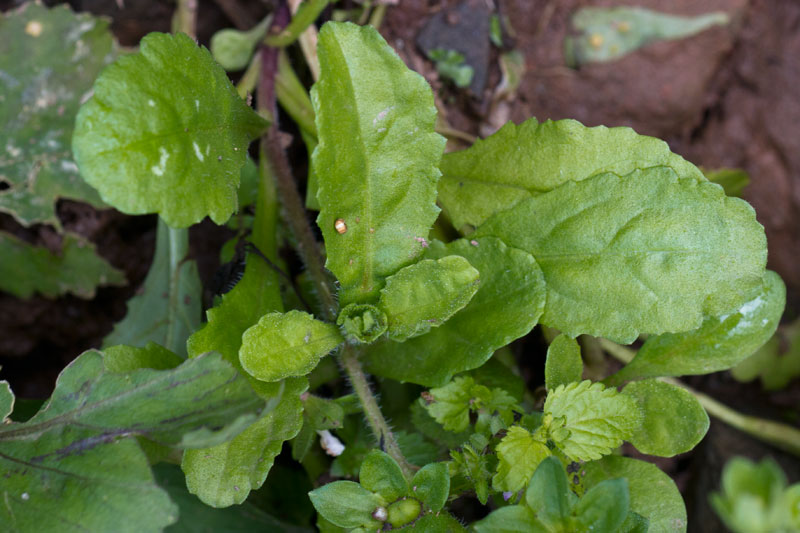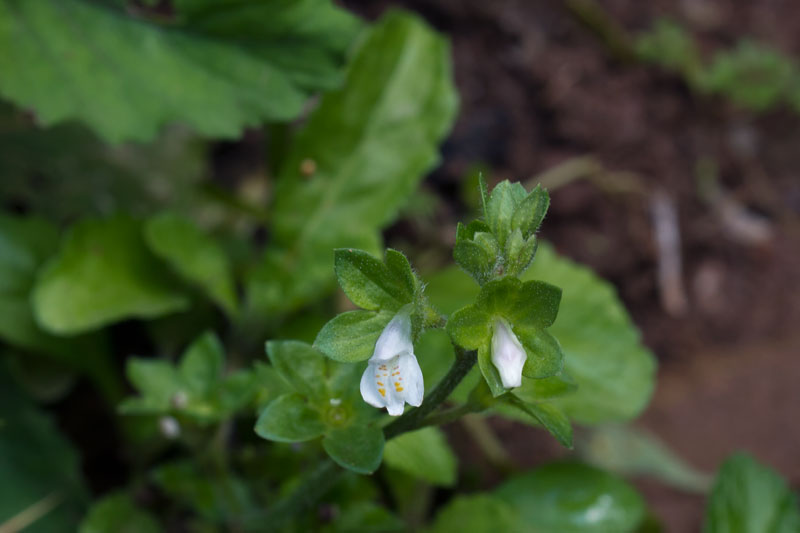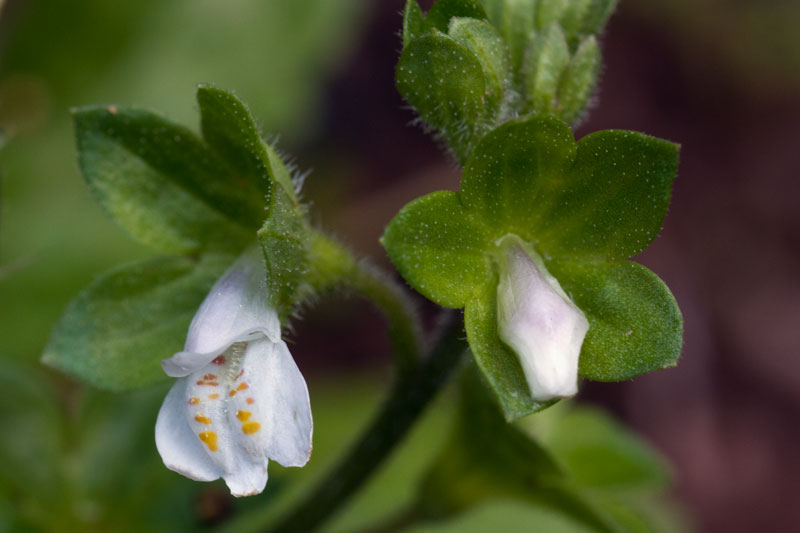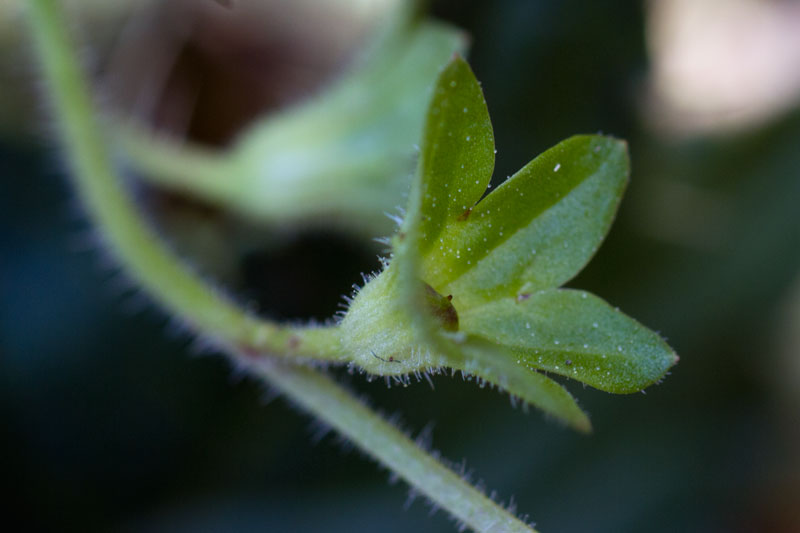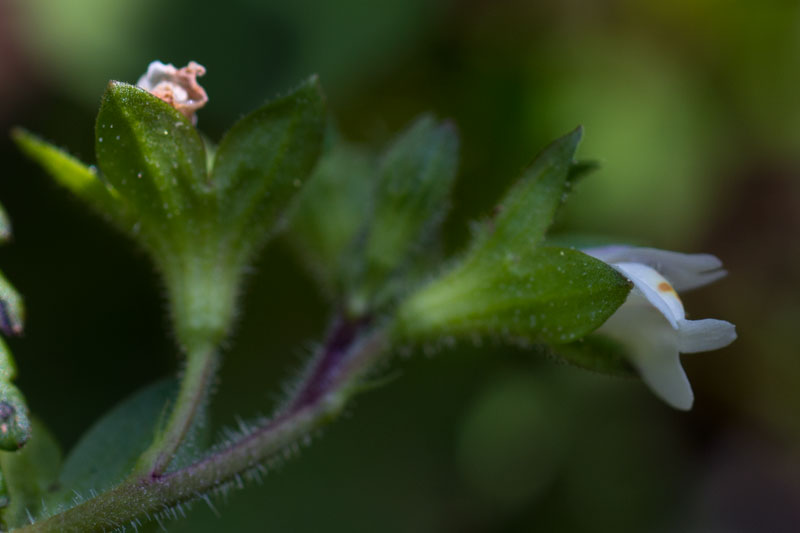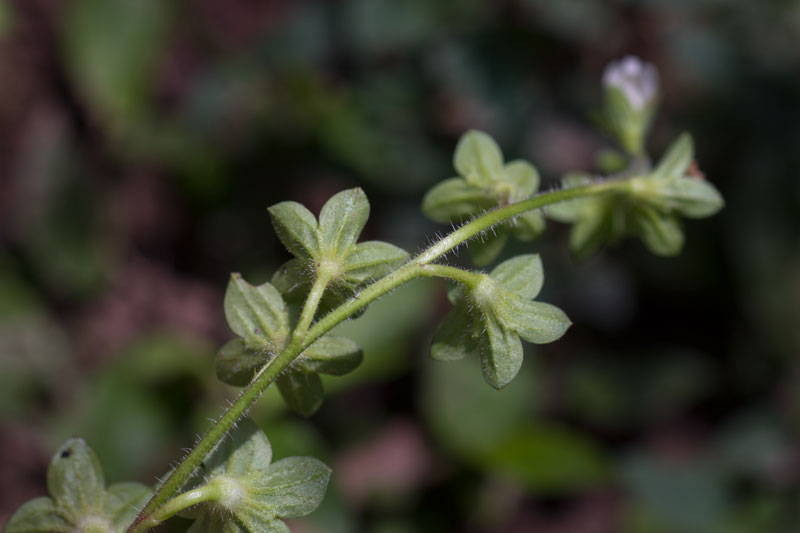|
Mazus goodeniifolius (Hornem.) Pennell (syn: Gratiola goodenifolia Hornem.; Hornemannia goodeniifolia Hoffmgg. ex Steud.; Mazus goodenifolius (Hornem.) Pennell; Mazus yakushimensis Sugimoto ex Yamazaki) ?;
Kalatope id al190411 : 8 posts by 4 authors. Attachments (3)
A small one for id,
Location Kalatope, Chamba
Altitude 2100 mt Habit herb Habitat wild Height 3 inches This looks like Mazus pumilus
To me it appears more closer to the images at Mazus surculosus D. Don
To me, it appears more like Mazus delavayi.
Three species (M. delavayi, M. pumilus and M. surculosus) are reported to occur in Chamba district (H.P). by Singh and Sharma Thanks, …
Calyx seems certainly different from other two species.
However does not seem to match with illustration at http://www.efloras.org/object_page.aspx?object_id=4701&flora_id=2
As per keys at FOC (http://www.efloras.org/florataxon.aspx?flora_id=2&taxon_id=210001250), it appears more closer to Mazus pumilus var. pumilus rather than Mazus pumilus var. delavayi (Bonati) T. L. Chin ex D. Y. Hong
Surprisingly we do not have any post so far on Mazus delavayi in efi.
Pl. also see keys in efi at Mazus surculosus D. Don
It does not match well with any of the two species (M. pumilus and M. surculosus) listed in efloraindia. What prompted me to think of M. delavayi on the basis of description given in “FLORA OF CHAMBA” is: i. Small pedicel ii. More hairy than other two iii. Not appearing to have runners (found in M. surculosus). Still, I am not sure about its correct identity. Can it be from some other genera. Seems to match with images of Mazus goodenifolius at
But as per Annotated checklist of the flowering plants of Nepal, it is stated to be a syn. of Mazus pumilus
You are right, … This plant by … is matching very closely with Mazus goodenifolius (Syn. Mazus delavayi auct., non Bonati). Flora of Chamba has described Mazus delavayi Bonati only. Found a white Mazus on my walk today. Is it normal? To me it looks like M. surculosus only but I could be wrong. Please advise.
The genus Mazus is no longer in the Scrophulariaceae family but Phymaceae which includes
The Kew Herbarium image: http://apps.kew.org/herbcat/getImage.do?imageBarcode=K001117588
There are two species of Mazus to consider. In ‘Flora Simlensis’ there is also M.rugosus -which Stewart and ‘The Plant List’ has this as M.japonicus.
Flora Simlensis has M.japonicus as the common species at Shimla – he distinguishes it by the lack of runners and calyx lobed half-way down cf. shortly toothed in M.surculosus.
For M.japonicus see: https://www.google.co.uk/search?q=%22Mazus+japonicus%22&tbm=isch&gws_rd=ssl
Your images show runners. I don’t think that Flora Simlensis calyx characteristic holds true, so M.surculosus does seem the most likely.
I have visited Manali several times. In the mid-1980s I led botanical tours to Lahoul, with Manali as the base, recording Mazus surculosus in the Deodar forest there but did not consider other species at the time.
Pl. also check comparative images & keys at Mazus
Mazus japonicus (Thunb.) Kuntze is now a synonym of Mazus pumilus (Burm.f.) Steenis
This specimen appears to be quite interesting.
I think, I should be Mazus delavayi.
Key to Mazus species in H.P.: 1. Runners present, leafy calyx shortly toothed: M. surculosus 1. Runners absent, calyx lobed half way down: 2. Stem hairy, calyx larger than pedicel: M. delavayi
2. Stem glabrous or sparsely hairy, calyx shorter than pedicel: M. pumilus Now, Mazus pumilus var. delavayi (Bonati) T.L. Chin ex D.Y. Hong is an Thanks … for drawing this to my/our attention. Mostly a question of me too rapidly assuming a likely identification without checking properly – especially with plants from what are ‘low’ elevations for me. As soon as it gets to 2000m or less, my familiarity and knowledge rapidly decreases! I know little of the Mazus genus, largely limited to a casual look at specimens growing around Manali some 30 years ago…. I now see that Stewart gave Mazus delavayii as a synonym for M.japonicus (also M.rugosus). He found this common, ascending to 2100m in rice fields and pond borders in N.Pakistan and Kashmir.
A common mistake I have observed is for people to assume that ‘Flowers of the Himalaya’ is a FULL flora. It is merely a guide to a fraction of the total flora (often not much more than 1/10th described or illustrated), concentrating on the commonest and showiest species. Too many users of this book automatically “match” at a quick glance what they see or photograph in the Himalaya with the single photo in that book. Often the image does not show important characteristics which distinguish it from similar species. This leads to numerous misidentifications. Many do not bother to check the geographic distribution, altitudinal range or typical habit for each species to see if the identification makes sense or should be double or triple-checked!
I am not a taxonomist but would think that characteristics of calyces are stronger than the presence or not of runners. I am curious where the key to Mazus species in H.P. comes from?
I note from images taken in H.P. that some examples have much smaller calyces in relation to the flowers – though these seem also to have the calyx +/- cut to half way as well. So are these within Mazus surculosus or M. pumilus var. delavayii?
See: http://www.flowersofindia.net/catalog/slides/Suckering%20Mazus.html (I would not described the calyx as ‘toothed’) and https://forwildlife.wordpress.com/wild-flowers-of-kalatope-khajjiar-sanctuary/wildflowers-in-june/ (I would say the calyx here is definitely not just toothed and approaches the being lobed half way down).
As for the line drawing in FOC for M.surculosus, this shows small calyces which could be described as having toothed lobes), see: http://www.efloras.org/object_page.aspx?object_id=3540&flora_id=2 and then there are the line drawings for M.pumilus see: http://www.efloras.org/object_page.aspx?object_id=4701&flora_id=2 (I would say that the images taken by … certainly have a prominent calyx, small flowers in relation to the calyx and do not fit number 3 i.e. var. delavayii) Strange and remiss of the authors to include flowers in the line drawings of M.surculosus and not for M.pumilus which makes it difficult to judge flower/calyx size.
I remain somewhat uncertain/confused. One problem in interpreting FOI is that the authors, no matter how botanically able, may only have seen specimens from Chinese territory. The variation of species in NW may well be different/not able, so one has to be cautious here.
Anyhow, I have started to inspect Mazus more closely. The fine photos of … (which show close-up the characteristics of the calyx) and others plus line drawings in FOC are much more useful than low resolution images of herbarium specimens. As always, “a picture paints a thousand words”. Putting into words plant variation is often difficult. Keys should always be viewed with caution and not accepted without question.
The currently accepted name is noted – along with various nomenclatural changes over time. Of course not all changes/revisions are accepted.
I approach plant identification as detective work. This is another example and further evidence that we cannot rely solely upon Hooker’s ‘Flora of British India’, which is well out-of-date (though he and other contributors did a remarkable job for the time). Every checklist and flora (no matter how reliable they are) become out-of-date as soon as they are published!
Four species of Mazus have been reported from Himachal Pradesh. Manali area has only two (M. surculous and M. pumilus). Other two species found in H.P. are M. delavayi (now M. pumilus var. delavayi) and M. harmandi.
The key, I have posted, was taken from “FLORA OF CHAMBA” by Singh and Sharma. Many other FLORAS have been written on plants of H.P. I have all of them with me except one on Lahul & Spiti. Thank you both very much for your advice. My apologies for a late reply! I wanted to revisit the plant and collect more evidence before writing. I found the plant this morning and here are some observations with photographs; 1. Calyx lobes (8-9mm) are longer than the peduncle (5mm)
2. Calyx lobe edges are not toothed
3. The stem bearing flowers is hairy and runner-like
4. Flowers edge out the calyx slightly in corolla length.
Please advise.
5 images.
The additional observations and photos are helpful.
I think this illustrates that this genus needs further study/checking.
Thanks … I agree, this needs further consideration. There is one more option as discussed in details of … plant from Himachal: Mazus goodeniifolius ? Thank you … I have been ruminating on that too. Hopefully we will have more expert advice soon. Unfortunately, Mazus goodenifolius is not an accepted name in ‘The Plant List’.
Stewart knew it as a ‘tropical’ plant with records from Sind & Punjab.
Because it has been identified as this does not mean it definitely is.
Cannot easily find an accepted synonym which is accepted either – under Gratiola e.g.
Thanks, … As per GBIF & Catalogue of Life it is accepted name, while The Plant List Ver.1.1 states it to be (unresolved).
References: GBIF Catalogue of Life The Plant List Ver.1.1 (unresolved) |
Disclaimer
1. For any mistake in identification or for becoming efloraofindia e-group member (for contributing towards building of efloraofindia or otherwise), pl. mail to indiantreepix@googlegroups.com or itpmods@googlegroups.com
2. For better viewing of species’ pages, colour scheme & formatting is being followed as: Description of the species, Details of other flora species on the same page, Uses/ harms, Distribution, Abundance/ Location/ Flowering time & date, Habit & habitat, Etymology & pronunciation, Other interesting information, stories etc., Others, Botanical names, Common names, Main point of discussion below, Discussion about Botanical names.
Navigation
- Award for eFloraofIndia
- Colour scheme & formatting
- Copyrights, Permissions, Citations
- eFloraofIndia appreciated
- Names of Plants in India site
- Flowersofindia site
- Posting Guidelines
- For members’ information
- Logo, Tagline, Acronym
- Volunteers required
- ‘Pitamah’ of eFloraofIndia
- ‘अजेय’ ‘Ajey’ of eFloraofIndia
- ‘Saarthi’ ‘सारथि’ of eFloraofIndia
- ‘Jewel’ of eFloraofIndia
- ‘Grassman’ of eFloraofIndia

